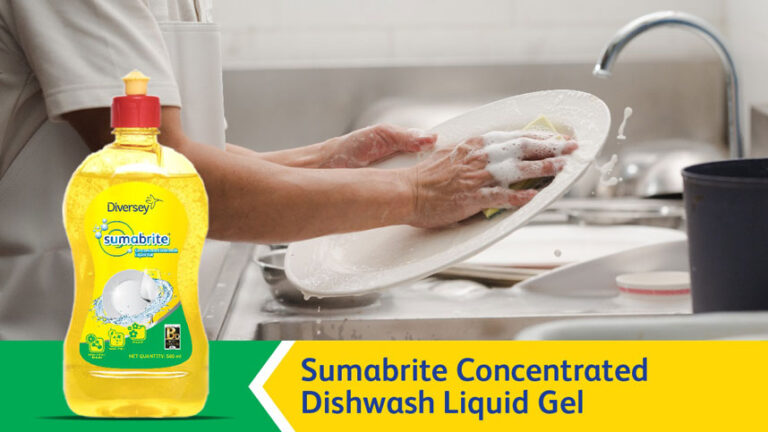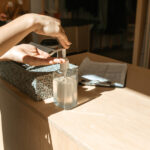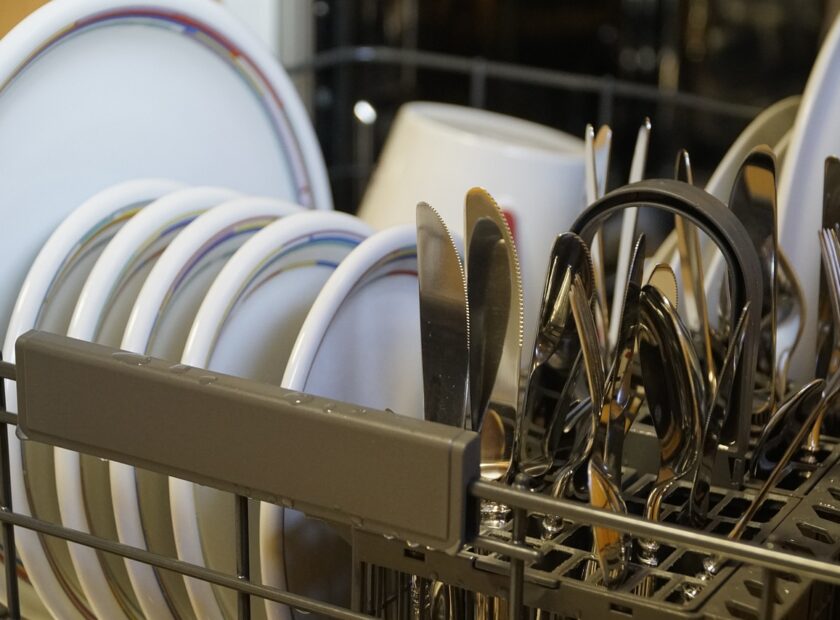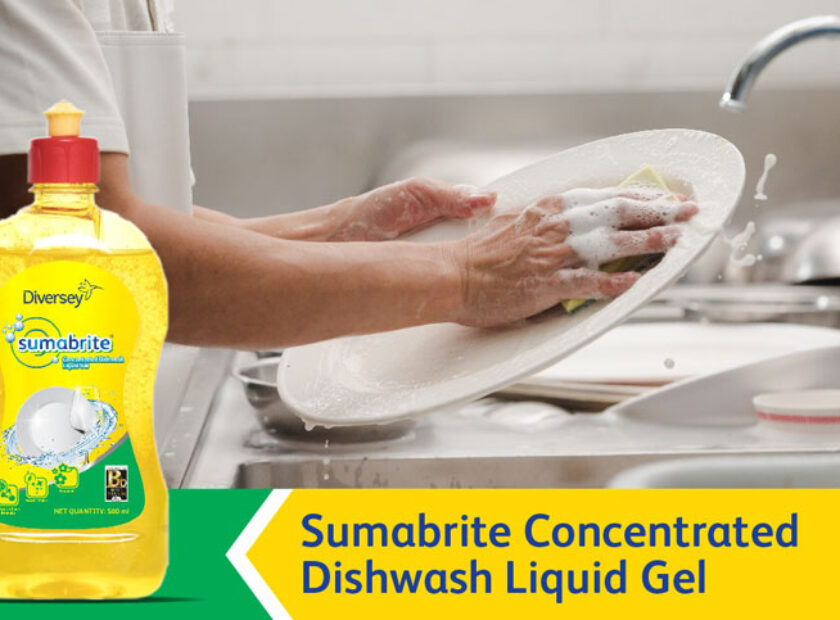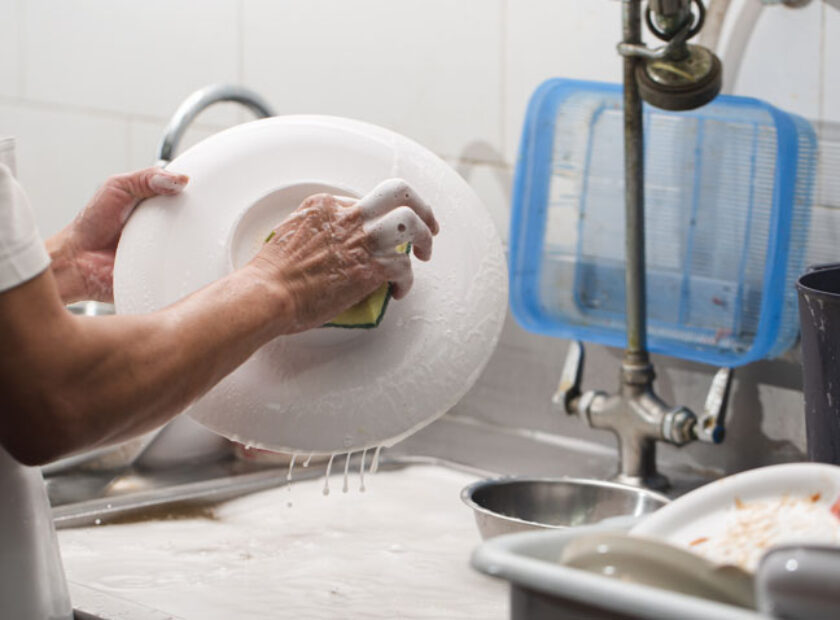Here’s an easy-to-follow sequence for dishwashing by hand along with a bundle of tips to help you save your time, water, utensils, dishwasher and effort.
After reading the blog’s title, if you are wondering whether there is indeed a right way to wash dishes by hand then this blog is just for you. For those who are aware of the correct way to hand-wash dishes, we suggest you still read on because dishwashing becomes a lot easier and better with the right dishwasher on hand.
Step #1: Prep the dishes
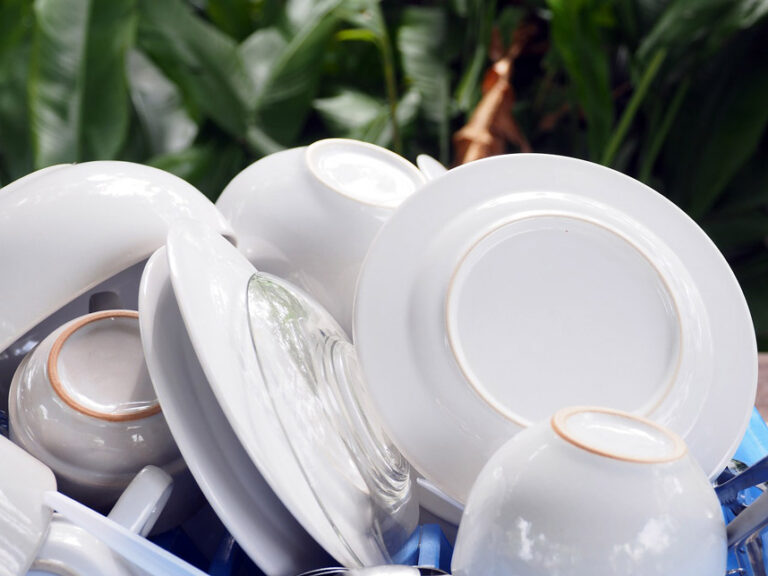
- Scrape excess food from the utensils/cookware into the garbage.
- Soak the utensils/cookware for about 15–30 minutes.
- For items, such as pots and pans that are too large to soak, apply Sumabrite Concentrated Dishwashing Liquid Gel 500ml onto them and let them stay for a few minutes.
DISHWASHING TIP #1:
Remember to scrape excess food first to avoid polluting the wash water and wasting the dishwasher.
Step #2: Prep the sink
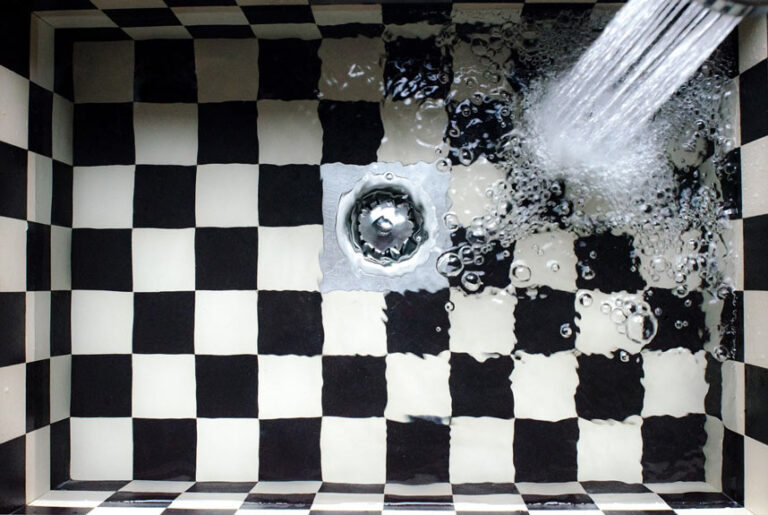
- Place the stopper in the sink. Alternatively, you could use a dishpan.
- Fill the sink or dishpan with hot water up to half its size.
- Add Sumabrite Concentrated Dishwashing Liquid Detergent 5L to the sink. Alternatively, you could choose to use Sumabrite Dishwashing Liquid Gel 500ml if your usual wash load is less.
DISHWASHING TIP #2:
It is best to use hot water (rather than tap water) to wash the dishes, as it helps to loosen food and grease.
Step #3: Wash the dishes
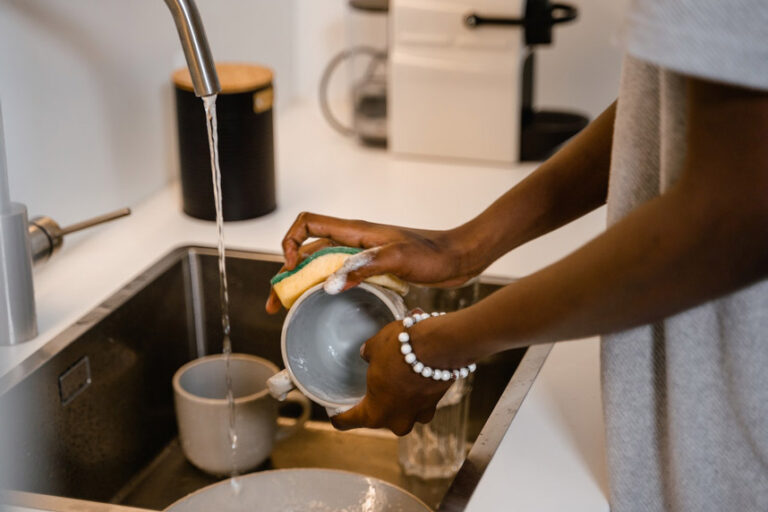
- Consolidate the dishes in the sink or dishpan.
- Wash the cleanest items or lightest soiled utensils/cookware first.
- Use a soft sponge or scrubber to wash every dish off all food particles. Ensure you don’t end up scratching the surfaces of your utensils (especially glassware or non-stick pans).
- Pay attention to the bottom of the pans. Any residue left at the bottom will end up blackening the pan when it would be used next for cooking.
- Wash knives one by one without hurting yourself.
- Replace the dishwashing water if it appears greasy or murky.
DISHWASHING TIP #3:
Wash the lightest soiled utensils/cookware first to keep the water cleaner for longer and avoid spreading food bits and grease smears in the sink or dishpan.
Step #4: Rinse the dishes
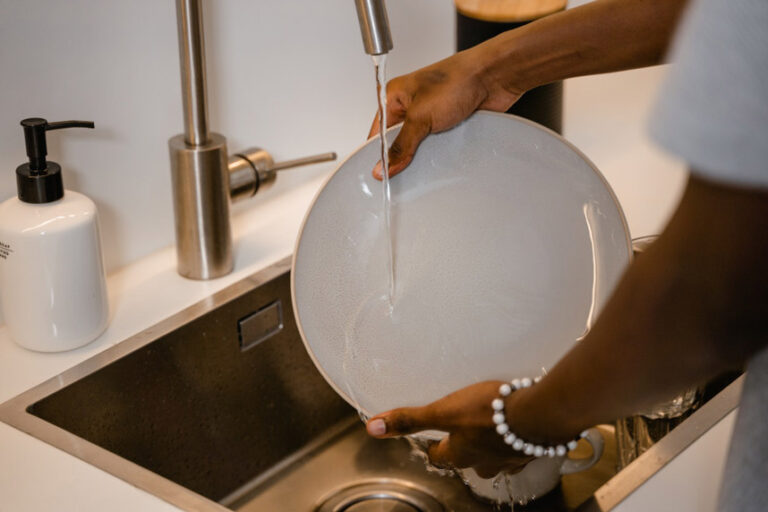
- If you have another sink or a dishpan, fill it with fresh water for rinsing the utensils/cookware.
- Transfer the soapy items to this rinse sink or dishpan.
DISHWASHING TIP #4:
Replace the rinsing water as and when needed.
Step #5: Dry the utensils/cookware
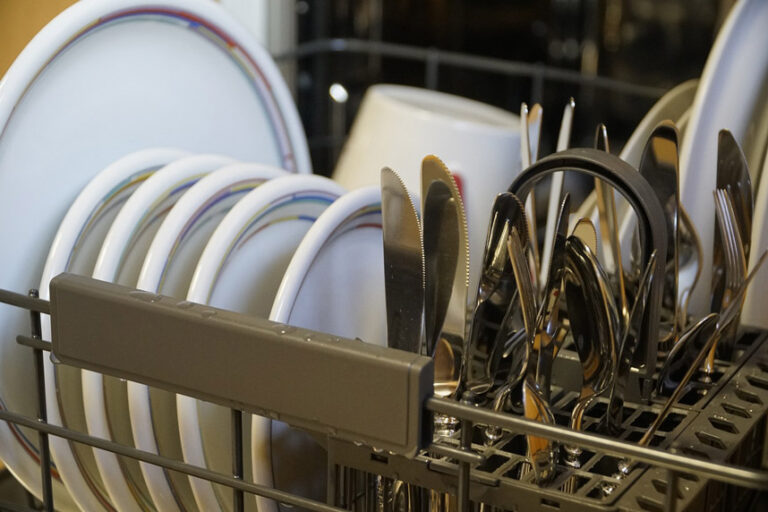
- Air dry the dishes. Place the utensils upside down on a clean counter.
- Use microfibre clothe to buff up glassware or silverware to remove water spots.
- Wash the sink, counter and/or dishpan to remove any residue.
DISHWASHING TIP #5:
Avoid cleaning the utensils with towels, as they attract germs the most.
The right dishwasher makes the difference
Use Sumabrite Concentrated Dishwashing Liquid Detergent 5L or Sumabrite Concentrated Dishwashing Liquid Gel 500ml for dishwashing by hand. We have designed them scientifically to contain mixed actives and special ingredients to enhance the washing. They are excellent for cleaning all stained dishes, crockery, utensils and cutlery.
Benefits:
- Make dishwashing highly effective, effortless and quick.
- Easily eradicate stains and dirt on cutlery, crockery and utensils.
- Leaves all types of kitchenware streak and scratch-free.
- Don’t leave the hands dry and rough during washing utensils. They are tough on stains, not skin.
- Are fully biodegradable and come with eco-friendly packaging.
- Leave behind a fragrance. They emit a pleasant fragrance with every wash, giving you not only tough cleansing but also a non-allergic and harmless scent.
- Are economic for long-term use.
Commercial facilities trust Diversey’s Sumabrite for kitchen operations. The next time your staff is set to hand-wash dishes, remember to give them this correct handwashing manual and the right dishwasher.


